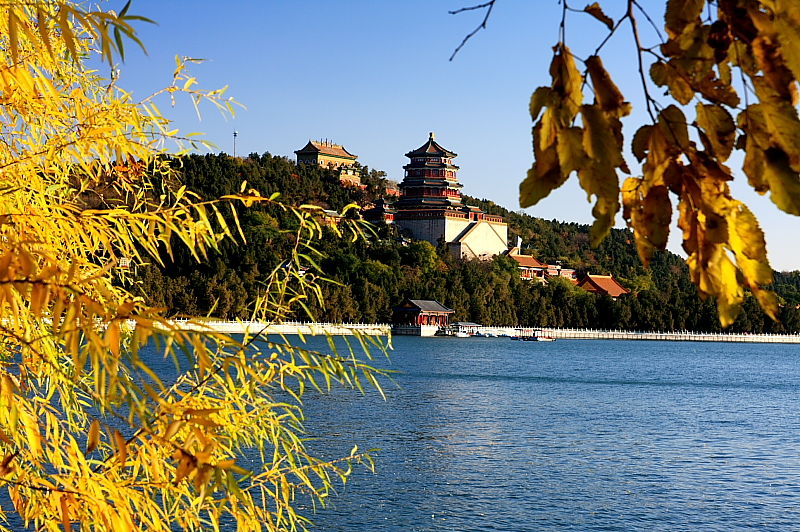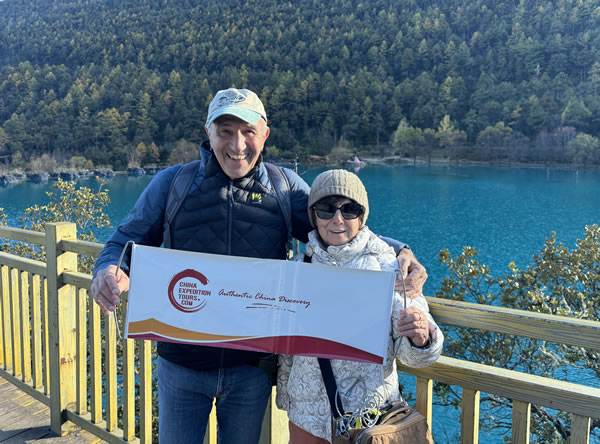Highlights
You cover both the "Top Four" China's classic tourist cities (Beijing, Xi'an, Guilin and Shanghai) and other naturally beautiful places in this tour. The picturesque scenery along the Li River in Guilin will amaze you and consume dozens of films or a big capacity of the memory card in your camera. You will get very excited upon getting a close look at the giant Panda who is China's animal ambassador in the panda center in Chengdu. Jiuzhaigou is really a colorful fairyland and you see Tibetan people there. People say if you regard China as a huge and robust tree, the city of Xi'an is definitely the deeply-earthed roots of the tree. The Bell Tower, the City Wall, the pagodas are all the witnesses of this ancient capital's prosperity and brilliance in the past. The Terra Cotta Warriors and Horses is still a mysterious legend of the first centralized feudal empire of China. You will probably be shocked by Shanghai's modernization and fashionable life. A walk to the Nanjing Road and the Outer Bund will inform you how booming China's economy is. The Yellow Mountain which boasts the Greatest Mountain in whole China and Hangzhou's West Lake will both leave you a memorable impression of China's natural beauty. In the capital of Beijing, the Great Wall, the Forbidden City and the Temple of Heaven and the other places of interests that are in the list of the World Cultural Heritage will give you the first impression of China. Stories told by your guide when you're standing in the world's largest imperial palace will help you learn lots of history about China's last two imperial dynasties, the Ming and the Qing Dynasty. Actually, Beijing is a city of amazing contrasts--an ancient capital with some incredible historical sites, and a bustling modern metropolis successfully hosted the 2008 Olympics.
Itinerary
Arrive in Guilin from Hong Kong by taking an evening flight. Our representative will meet you at airport upon your arrival, and you are transferred to your hotel.
Stay overnight in Guilin.
Meals included:
Drive to the wharf for [Li River cruise], enjoy the Li River picturesque scenery to Yangshuo. The cruise will definitely make your highlight of visit to China. We will pass the extraordinary peaks, sprays of bamboo lining, local fishing rafts floating on the river and picturesque villages. After disembarkation, some free time will be spent on [Yangshuo town] which boasts the "Global Village" due to the popularity with travelers from all over the world. And then drive back to Guilin.
Stay overnight in Guilin.
Meals included: Breakfast , Lunch
We have a whole day round trip to [Longji], a minority area with magnificent terraced rice paddies.
Stay overnight in Guilin.
Meals included: Breakfast , Lunch
We go to visit the [Reed Flute Cave] , the natural beauty of a large amount of stalactites and stalagmites, with their endless variety of remarkable scenes. Then come to [Elephant Trunk Hill] , the symbol of Guilin city,that looks like a giant elephant with its long trunk drinking water from the Li River. Then you will be transferred to Guilin airport to catch your pm flight to Chengdu.
Meals included: Breakfast , Lunch
We have a whole day round trip to Leshan, where you take a short cruise and climb a little bit to see the [Giant Sitting Buddha] that is on the list of the World Cultural Heritage.
Stay overnight in Chengdu.
Meals included: Breakfast , Lunch
It will be a very exciting thing to see the Giant Panda in [Chengdu Giant Panda Researching and Breeding Base] in the morning. After an early lunch, we head to the airport to catch an early pm flight for Jiuzhaigou.
Stay overnight at Jiuzhaigou.
Meals included: Breakfast , Lunch
After breakfast, we will go to [Jiuzhaigou Scenic Area]. We will visit the [Shuzheng Valley], [Rize Valley] and [Zechawa Valley] that take a "Y" shape, in the Minshan Mountain Range. Inhabited by Tibetans, the nine villages and alpine lakes, affectionately called "Ham", are like reflecting mirrors or crystal jade blocks inlaid in Snow Mountains and forests. At the end of Zechawa Valley is the Chang (Long) Lake and the end of Rize Valley are virgin forests. From south to north, both Valleys stretch and meet at Nuorilang. The drop between the two valleys and Shuzheng Valley is over 1,000 meters (about 3,280feet), with 114 lakes lying downward in an echelon manner, on which are 17 waterfalls, 11 rip currents and 5 travertine beaches, formulating alpine lake clusters and travertine spots that are rarely seen in China and even in the world. We will have sufficient time to enjoy natural beauties best demonstrated in its lakes, waterfalls, beaches, water currents, snow peaks, and virgin forests and take photos.
Stay overnight at Jiuzhaigou.
Meals included: Breakfast , Lunch
Take our van or bus from the hotel to [Huanglong Scenic Area]. After an early lunch, we head to the airport to catch an early pm flight back to Chengdu airport and transfer to another flight followed from Chengdu to Xi'an.
Stay overnight in Xi'an.
Meals included: Breakfast , Lunch
A tour to the renowned [Terracotta Warriors and Horses Museum] today will show us these unearthed pottery statues, considered "the Eighth Wonder of the World" and one of the most important archaeological finds of the 20th Century. After coming back, the rest free time can easily be spent wandering the narrow streets among the [Muslim quarter] where we can find quaint shops, lively markets, groups of white-bearded men in skull caps sipping tea in dingy cafes.
Stay overnight in Xi'an.
Meals included: Breakfast , Lunch
You may still have some free time to explore the city yourself in the morning. Then we go to visit the [Shaanxi Provincial Museum] which will explain to you how Xi'an became the cradle of Chinese culture. And the [Big Wild Goose Pagoda] which was built by the eminent monk Xuanzang in 652 AD, with a great importance in China's Buddhism history. After those, we go to the airport, taking a pm flight to Shanghai.
Stay overnight in Shanghai.
Meals included: Breakfast , Lunch
Today, we are going to visit [Yuyuan Garden], a beautiful private garden which is the most typical representative of its sort of Chinese garden; the [Outer Bund], from where you see the modern skylines of this China's biggest city; and then [Nanjing Road] nearby, to experience the most prosperous and bustling shopping center of Shanghai.
Stay overnight in Shanghai.
Meals included: Breakfast , Lunch
Please have a free morning. In the afternoon, we will visit the [Jade Buddha Temple], which is an elegant architecture famous for its Buddha statue which is carved of solid white jade and decorated by jewels. We will enjoy our lunch at a romantic Shanghai restaurant. After lunch drive to the airport for a flight to Yellow Mountain.
Stay overnight in the Yellow Mountain City.
Meals included: Breakfast , Lunch
You will not go to visit other mountains after coming back from the [Yellow Mountain], a Chinese saying goes like that. We're going to visit it today! We will be transferred from the Yellow Mountain City to the foot of the mountain, and then [take cable car to the top] of it, tour to [Jade Buddha Temple] and other different peaks.
Stay overnight on top of the mountain.
Meals included: Breakfast , Lunch
Ride down to the foot of the mountain and then drive to Hangzhou.
Stay overnight in Hangzhou.
Meals included: Breakfast , Lunch
Have a city tour including the [West Lake] which has been describing for ages as a charming beauty, the [Lingyin Temple], the most famous one of its sort in southern China, and [Tea Plantation Farm] to taste the world-wide famous Dragon Well Tea.
Stay overnight in Hangzhou.
Meals included: Breakfast , Lunch
Have a free morning and take a pm flight to Beijing.
Stay overnight in Beijing.
Meals included: Breakfast , Lunch
Visit [Temple of Heaven], the place where the ancient emperors used to pray for the God's bless of the whole nation. [Tian'anmen Square], the largest city square in the world. And the [Forbidden City] which is the largest imperial palace in China during the Ming and Qing dynasties with a history of around 600 years.
Stay overnight in Beijing.
Meals included: Breakfast , Lunch
We will travel to [Jinshanling Great Wall], a largely unrestored and, as such, more authentic section of the famous wall, not crowded with hordes of other tourists. Climbing up this incredible man-made engineer and surveying the spectacular surrounding countryside is an unforgettable experience.
Stay overnight in Beijing.
Meals included: Breakfast , Lunch
Visit the [Summer Palace] which is the biggest and most renowned imperial summer resort from the Ming and Qing Dynasty and a great example of China's extraordinary workmanship and architecture. Have a big farewell dinner in the evening!
Stay overnight in Beijing.
Meals included: Breakfast , Lunch
Your China tour we sponsored ends after breakfast.
Meals included: Breakfast
Pricing & Accommodation
-
 US Dollar
US Dollar -
 Euro
Euro -
 GB Pound
GB Pound -
 CA Dollar
CA Dollar -
 AU Dollar
AU Dollar -
 HK Dollars
HK Dollars -
 Renminbi
Renminbi
| 1 person | 2-5 persons | 6-9 persons | ≥10 persons | Single Room Supplement | |
| First Class Tour | $6414 | $4515 | $3909 | $3213 | $1400 |
| Comfortable Tour | $5118 | $3713 | $3111 | $2610 | $1000 |
| Standard Tour | $4220 | $3217 | $2715 | $2116 | $700 |
* Price in every box above is for each person.
* The default currency is in US dollar. Please use the Currency Converter to see the equivalent quote in your currency. Price is for references only, it may vary according to your actual travel itinerary, travel time, hotel price rise or fall, US dollar exchange rate fluctuation, car fuel price change and government tax adjustment, etc..
* The price is only for your reference and it is subject to seasons, high or low.Please send us your inquiry if you are interested.
* The differences between First Class Tour, Comfortable Tour and Standard Tour are mainly reflected in the hotels we use. For First Class Tour, we use mostly 5 star hotels (or hotels corresponded to 5 star ones), 4 star hotels for Comfortable Tour and 3 star hotels for Standard Tour. But there’re exceptions when there come home stay experience, remote destinations and other specified circumstances in the itinerary.
Inclusions / Exclusions
Inclusions:
- Attraction Entrance Fees
- Centrally Located Hotels
- Authentic Chinese Food
- Private Experienced Guides
- Private Cars/Van with Drivers
- Internal Flights/Train(s) in China
- Luggage Transfers
- Airport Taxes and Fuel Fees
- Service Charge & Government Taxes
- Travel Insurance
Exclusions:
- International Airfare to Enter/Leave China
- China Entry Visa Fees
- Excess Baggage Charges
- Personal Expenses
- Single Room Supplement
- Tips or Gifts to Guides/Drivers/Bellmen
Important Information
How to Pack up
We suggest that each person packs up one rollable suitcase with the weight under 20 kg/44lb. You will also need a day pack/bag to carry water, cameras and other electronics like iPods and mobile phones.
Checklist
It's only for reference, you may not need all of them. Choose from below according to the tour you pick up:
Passport (with photocopies)
Travel insurance (with photocopies)
Airline tickets (with photocopies)
USD cash and travelers checks
Credit or debit card (see personal spending money)
CET vouchers and trip dossier
Any entry visas or vaccination certificates required
Day pack for daily personal items
Wet wipes / Moist towelettes
Alarm clock
Flashlight
Sun hat, Sun block, Sunglasses
Insect Repellent
Water bottle and Plastic mug for train journeys
Ear plugs for train journeys or light sleepers
Small towel and swim wear
Toiletries (biodegradable)
Sturdy walking shoes/Sport sandals
Money belt
Shorts for summer months (June – September)
Long pants
Shirts/T-shirts
Warm clothes for Nov-April. Fleece, Jacket, hat and gloves
Umbrella or waterproof jacket.
Cover for backpack or plastic bags to keep clothes dry.
Camera, film and memory chip
Reading/writing material
Binoculars
Pocketknife
First-aid kit (should contain lip salve, Aspirin, Band Aids, anti-histamine, Imodium or similar tablets for mild cases of diarrhea, re-hydration powder, extra prescription drugs you may be taking).
Local Dress
Generally speaking, the dress standard is more conservative in China than it is in western countries. Things also changes quickly, nowadays the young Chinese share the same hobbies with their western counterparts. When packing try to pick loose, lightweight, long clothing that will keep you cool in the usually hot and humid climate of summers. In predominately Buddhist and Muslim regions we ask that you dress respectfully and avoid very short shorts/skirts and singlets/tanktops when visiting temples or mosques or other holy sites.
Spending Money
Every traveller is different and therefore spending money requirements will vary. Some travellers may drink more than others while other travellers like to purchase more souvenirs than most. Please consider your own spending habits when it comes to allowing for drinks, shopping and tipping. Please also remember the following specific recommendations when planning your trip.
Money Exchange
As currency exchange rates in Asia fluctuate often we ask that you refer to internet for the recent exchange rates. There are many ATM machines that accept both Visa and MasterCard and other credit cards in most Chinese cities. We also recommend the use of cash and travelers checks in USD currency. Major credit cards are accepted in big shops but they may charge a 2-4% transaction fee. For the small shops and the street venders, they take cash (either Chinese Yuan or US dollar) only.
Meals
Eating is a big part of your traveling in China. Travelling with CET you experience the vast array of wonderful food that is available out in the world. Generally breakfasts and lunches are included except dinners to give you the flexibility in deciding where, what and with whom to eat. Your group leader or local guide will be able to suggest favorite restaurants during your trip.
Emergency Fund
Please also make sure you have access to at least an additional USD200 (or equivalent) as an "emergency" fund, to be used when circumstances outside our control, necessitate a change to our planned route. This is a rare occurrence!
Tipping
It is customary to tip service providers in travel industry in Asia, at approximately 10%, depending on the service. Tipping is expected - though not compulsory - and shows an expression of satisfaction with the people who have assisted you on your tour. Although it may not be customary to you, it is of considerable significance to the people who will take care of you during your travels. Recommendations for tipping local guides would range from $3-$5 USD per person per day depending on the quality and length of the service, for driver, it could be half. If necessary, ask your tour leader or call your CET tour advisor for specific recommendations based on the circumstances . If you have a tour leader for the whole tour, at the end of the trip if you felt he/she did an outstanding job, tipping is appreciated. The amount is entirely a personal preference, however as a guideline $3-5 USD per person, per day can be used.
Local Flights
All local flights are included in the cost of your tour unless otherwise noted. It is important that we have your passport information at the time of booking in order to process these tickets.Internal flight tickets are all e-tickets. They are issued locally and You will be given the information of them prior to the flight departure.
Laundry
Generally laundry facilities are offered by our hotels for a charge. You also can go to a laundry service center near your hotel to have your clothing washed at a lower cost. There will be times when you may want to or have to do your own laundry so we suggest you bring non-polluting/biodegradable soap.
Safety and Security
We strongly recommend the use of a neck wallet or money belt while travelling, for the safe keeping of your passport, air tickets, travelers' checks, cash and other valuable items. Many of the hotels we cooperate with have safety deposit boxes which are the most secure way of storing your valuables. A lock is recommended for securing your luggage.
Many national governments provide a regularly updated advice service on safety issues involved with international travel. We recommend that you check your government's advice for their latest travel information before departure. When travelling on a trip, please note that your group leader or local guides has the authority to amend or cancel any part of the trip itinerary if it is deemed necessary due to safety concerns. Your leader or local guides will accompany you on all included activities. During your trip you will have some free time to pursue your own interests, relax and take it easy or explore at your leisure. While your group leader or local guides will assist you with options available in a given location please note that any optional activities you undertake are not part of your itinerary, and we offer no representations about the safety of the activity or the standard of the operators running them. Please use your own good judgment when selecting an activity in your free time.
A Couple of Rules
Illegal drugs will not be tolerated on any trips. Possessing or using drugs not only contravenes the laws of China but also puts the rest of the group at risk. Smoking marijuana and opium is not acceptable for CET travellers. Our philosophy of travel is one of respect towards everyone we encounter, and in particular the local people who make the world the special place it is. Use of illegal drugs is completely contrary to this philosophy and local law. Our group leader or local guides has the right to expel any member of the group if drugs are found in their possession or used.
Health
You should consult your doctor for up-to-date medical travel information well before departure. We recommend that you carry a First Aid kit as well as any personal medical requirements. Please be aware that sometimes we are in remote areas and away from medical facilities, and for legal reasons our leaders or local guides are prohibited from administering any type of drug including headache tablets, antibiotics, etc. In China pharmacies tend to stock the same western drugs as you get at home but they are usually produced locally so please bring the full drug name with you when trying to purchase a prescription drug. When selecting a tour please carefully read the itinerary and assess your ability to cope with our style of travel. Please refer to the Physical and Culture Shock ratings in this dossier for trip specific information. For travelers over 70 years a completed Medical Form is required. CET reserves the right to exclude any traveler from all or part of a trip without refund if in the reasonable opinion of our group leader or local guides they are unable to complete the itinerary without undue risk to themselves and/or the rest of the group.
Medical Form
It is very important you are aware that, as a minimum, an "average level of fitness and mobility" is required to undertake our easiest programs. Travelers must be able to walk without the aid of another person, climb 3-4 flights of stairs, step on and off small boats, and carry their own bags at a minimum. Travelers over the age of 70, or travelers with a pre-existing medical condition, are required to complete a short medical questionnaire, which must be signed by their physician. This is to ensure that senior travelers have the necessary fitness and mobility to comfortably complete their chosen trip. While our leaders or local guides work hard to ensure that all our travelers are catered for equally, it is not their responsibility to help individuals who cannot complete the day's activities unaided.
Travel Insurance
Travel insurance is compulsory in order to participate on any of our trips. You must have comprehensive travel insurance that covers you for medical costs associated with hospitalization, emergency travel and repatriation back to your home country. Please take your insurance policy with you when you travel. You may take other cover, of course, but we require you to be adequately insured before we can allow you to participate in our programs. Your CET leader or local guides will need to see and record your policy details at the pre-tour briefing at the starting city, so please bring a copy along to the meeting. If you arrive without travel insurance your tour leader or local guide will require you to purchase a policy before you continue your journey with us.
If you are covered by a policy arranged through your credit card company you will be asked to provide evidence of this cover, as well as a 24-hour emergency contact number. Many credit card companies do not provide an insurance policy number. In this instance, the tour leader or local guides will need to record your credit card number, as this is required to activate any request for emergency assistance. You should also bring along the travel insurance information booklet provided by your credit card company. It is your responsibility to ensure that you meet the requirements set out by your credit card company in order to be effectively covered and that the cover offered is of a suitable standard.
Passport & Visas
Well before travelling, please ensure that you have a current passport, with an accurate photo, that is valid for at least six months after your scheduled return home. Also check that your airline tickets are in exactly the same name as your passport.
Please note that visas for China and Hong Kong are the responsibility of the individual traveler. The visa requirements for your trip vary depending on where you are from and where you are going. Americans, British, Canadians, Australians and New Zealanders do currently require a visa for China. For all other nationalities please reconfirm your visa requirements with your government. For the most up to date information please check your governments' foreign ministry website. It is important that you check for yourself. For most travelers there will probably have an embassy and consulate in the country that you live in. Please note if you are travelling from China, into Hong Kong then back into China, you will need a double entry Chinese visa. Note that on some occasions people transiting through China on way to Hong Kong have been made to go through immigration and had their single entry visa stamped making this invalid. Do not allow your visa to be stamped if you are only going through transit.
Keeping in Touch
If you need to be contacted while travelling we recommend that you set up an email address that can be accessed on the road, rather than relying on postal mail. Email cafes are becoming increasingly commonplace and cheap throughout the country, and have quickly become the preferred way for our leaders and travelers to stay in touch. If someone wishes to contact you in an emergency while you are on one of our trips we recommend that they contact us so we can get into touch with your tour leader or local guide quickly by their cell phone and they can pass their cell phone to you! We recommend that family and friends don't try to contact you through phoning hotels en route, as our hotels are subject to change.
Feedback
After your travels, we want to hear from you! Your feedback information is so important to us and we'll record you and give you CET travel points so you can use the points to get discount for your next CET trip or your friends' CET tours.


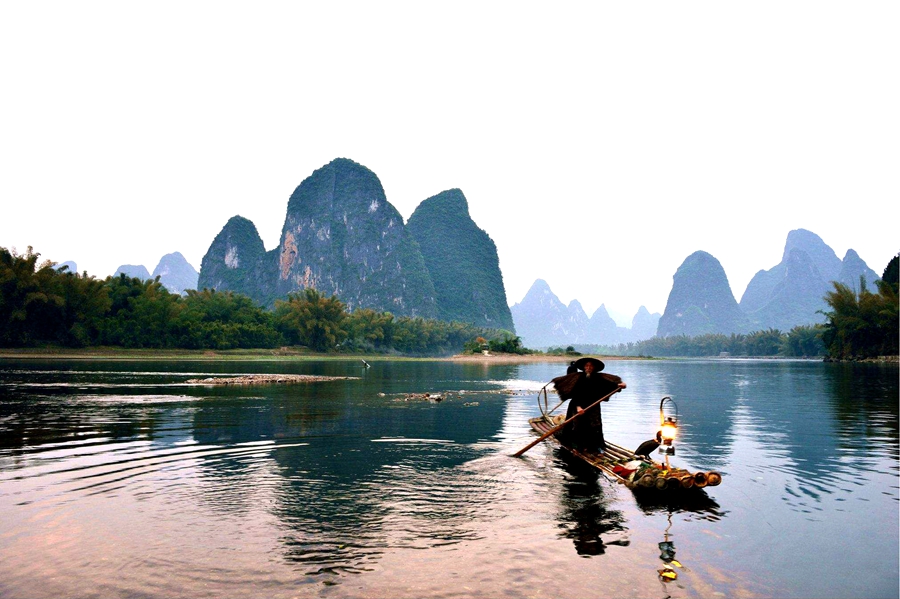
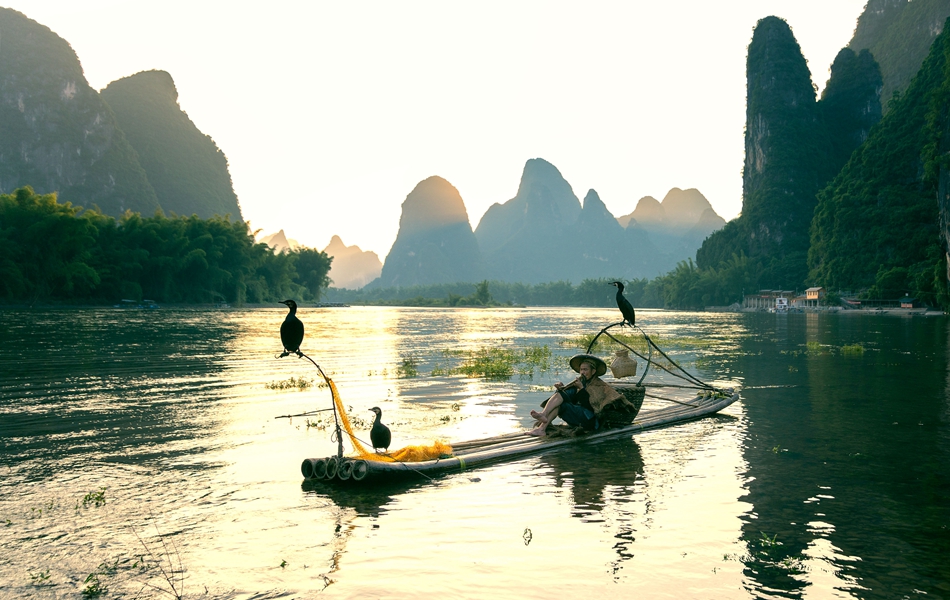









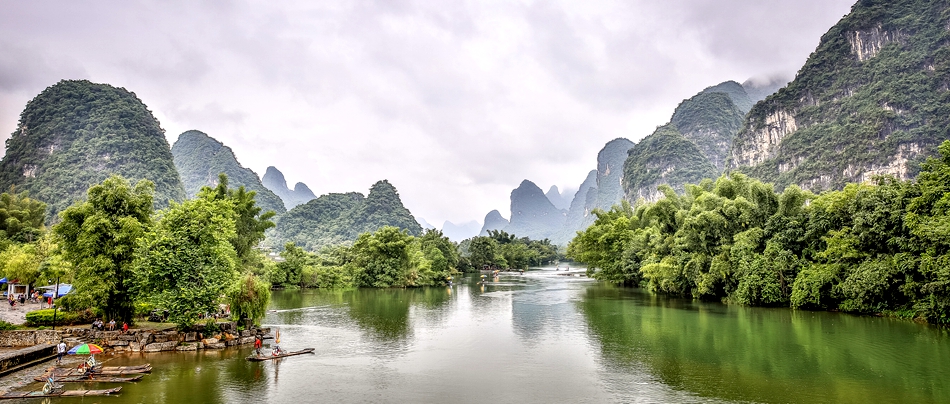


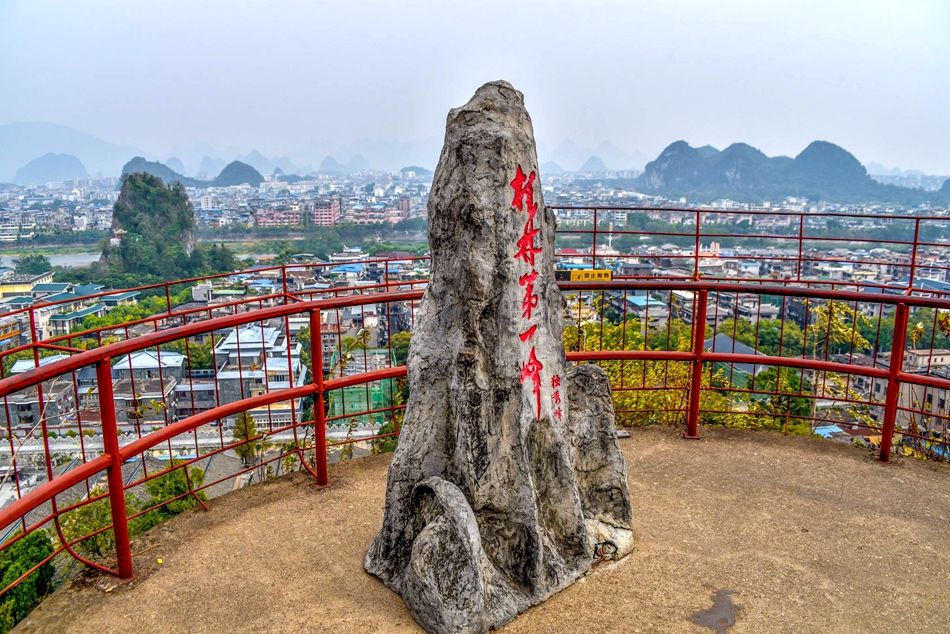
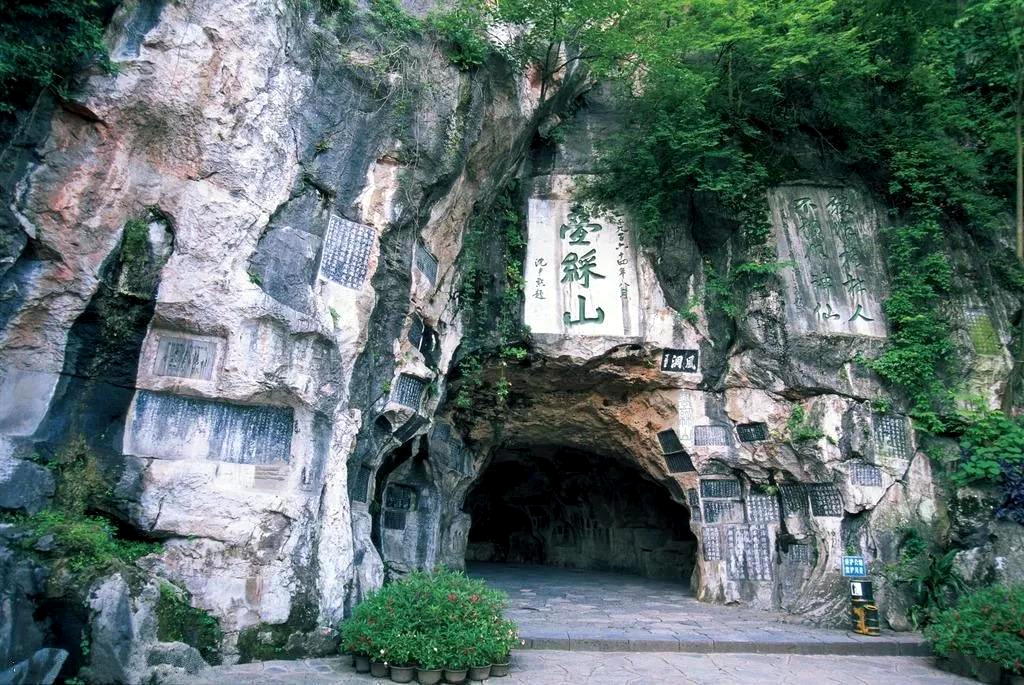


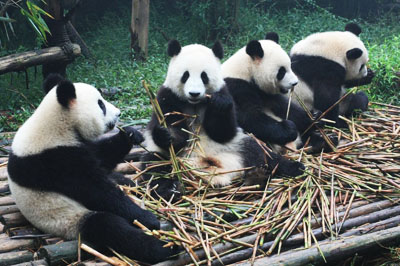









 Having witnessed centuries’ changes, the gorgeous Dujiangyan likes a record of the history attracting a growing number of tourists with the picturesque and splendid landscape. On November 29, 2000, Dujiangyan was listed as the world cultural heritage by UNESCO. Nowadays, Dujiangyan is not only the irrigation work, but also a popular scenic spot with many charming sceneries around--just like many stars twinkling around the moon.
Having witnessed centuries’ changes, the gorgeous Dujiangyan likes a record of the history attracting a growing number of tourists with the picturesque and splendid landscape. On November 29, 2000, Dujiangyan was listed as the world cultural heritage by UNESCO. Nowadays, Dujiangyan is not only the irrigation work, but also a popular scenic spot with many charming sceneries around--just like many stars twinkling around the moon.
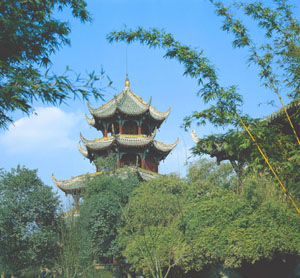 Wangjiang Pavilion with a height of 39 meters is the most shinning architecture in the Wangjiang Park that covered by green bamboo woods. Wangjiang Pavilion, built in Qing Dynasty (1644-1912), was designed as an octagonal shape with the overhanging eaves, sharp golden roof, and various exquisite figure carvings and clay sculptures of animals decorating each floor. Located on the bank of Jinjiang River, Wangjiang Pavilion provides an ideal angle for river viewing, from which it derived the present name “Wangjiang Lou”.
Wangjiang Pavilion with a height of 39 meters is the most shinning architecture in the Wangjiang Park that covered by green bamboo woods. Wangjiang Pavilion, built in Qing Dynasty (1644-1912), was designed as an octagonal shape with the overhanging eaves, sharp golden roof, and various exquisite figure carvings and clay sculptures of animals decorating each floor. Located on the bank of Jinjiang River, Wangjiang Pavilion provides an ideal angle for river viewing, from which it derived the present name “Wangjiang Lou”.

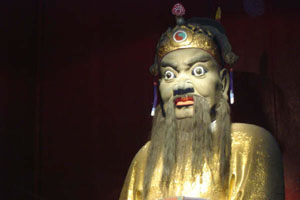




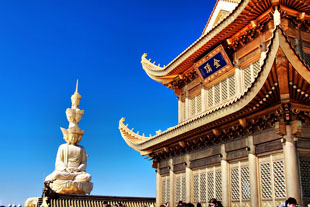






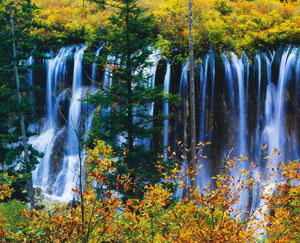














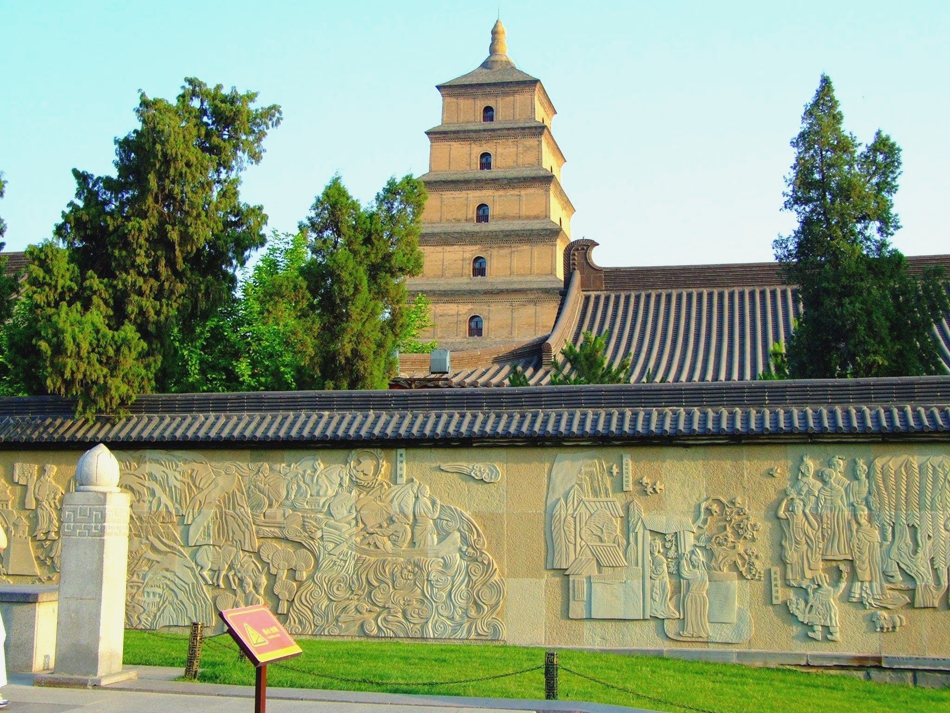






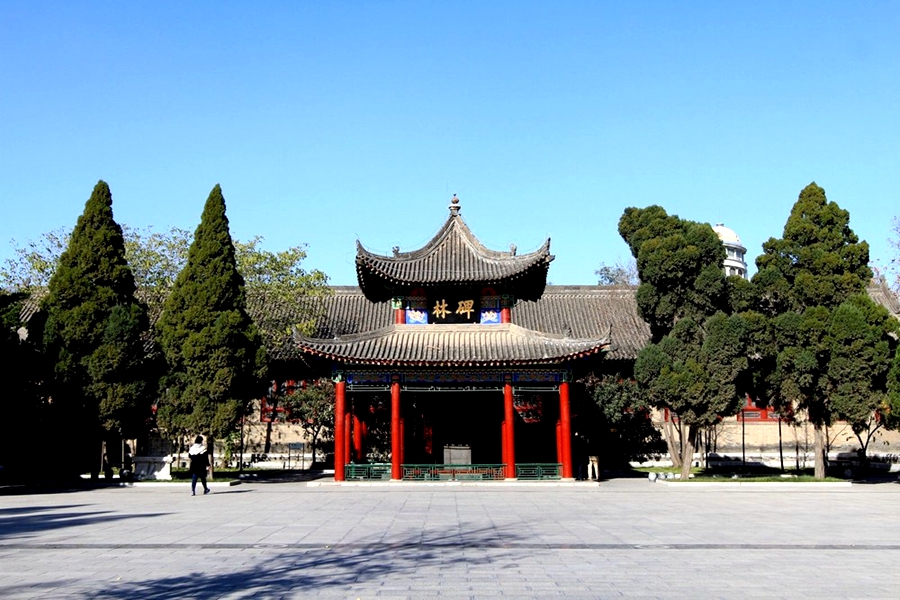

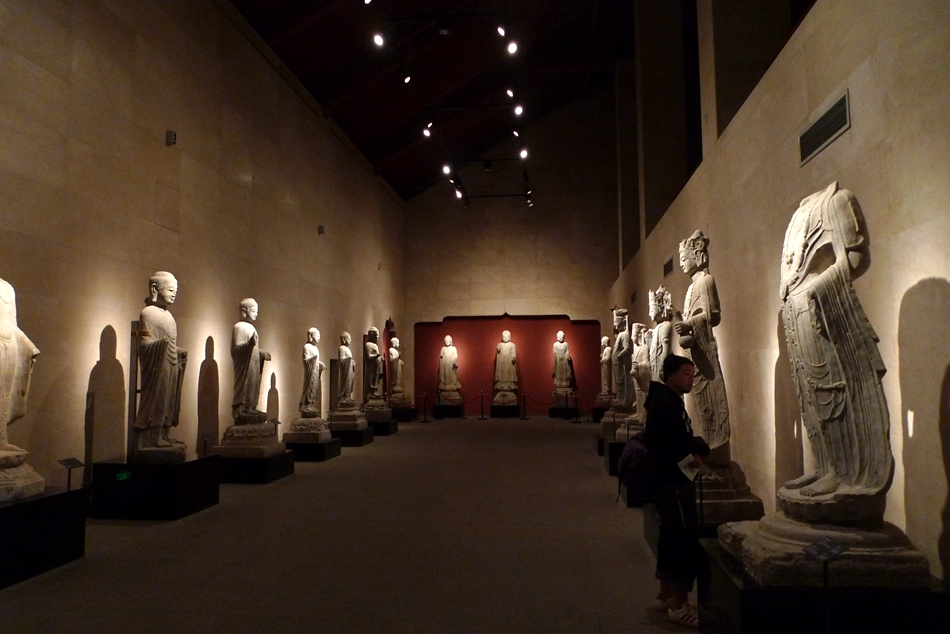


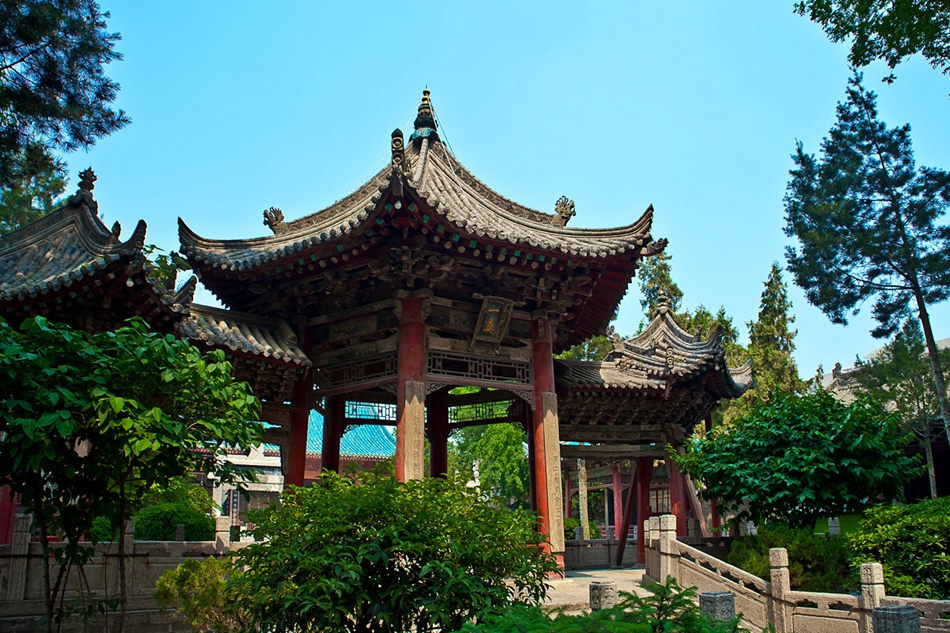






















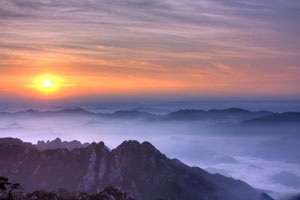


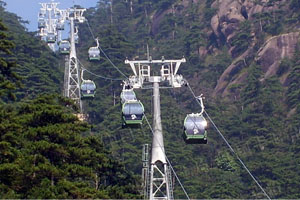


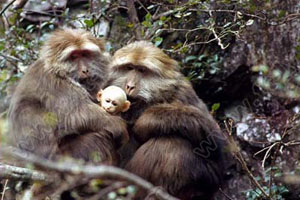
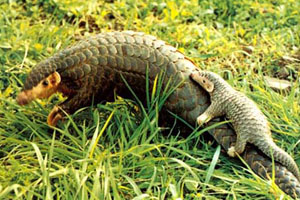

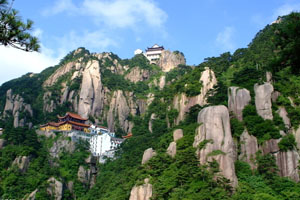
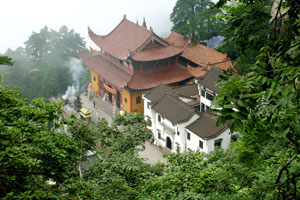


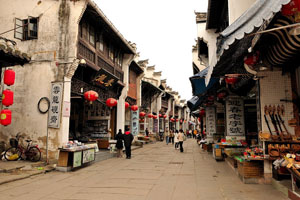













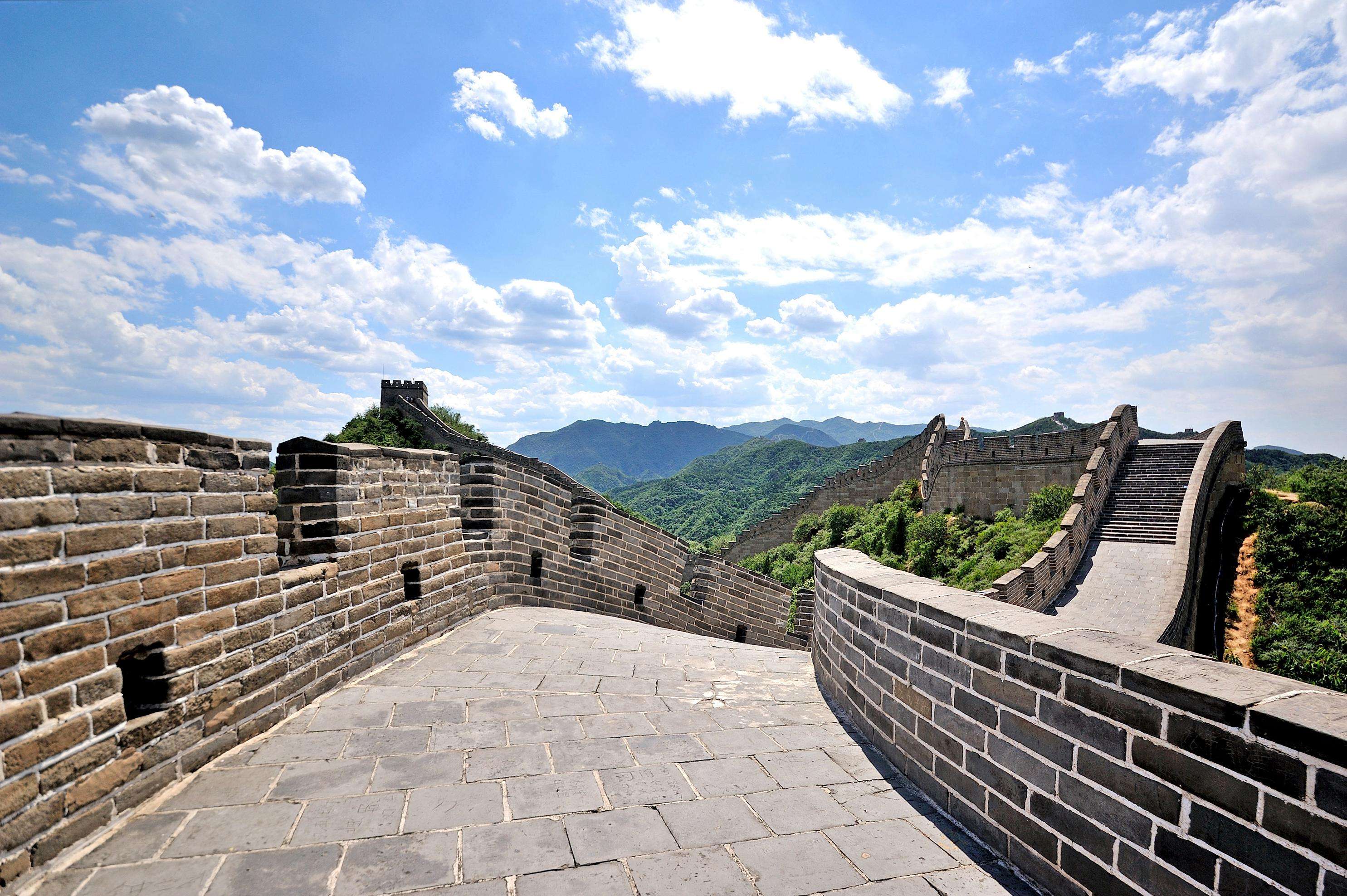

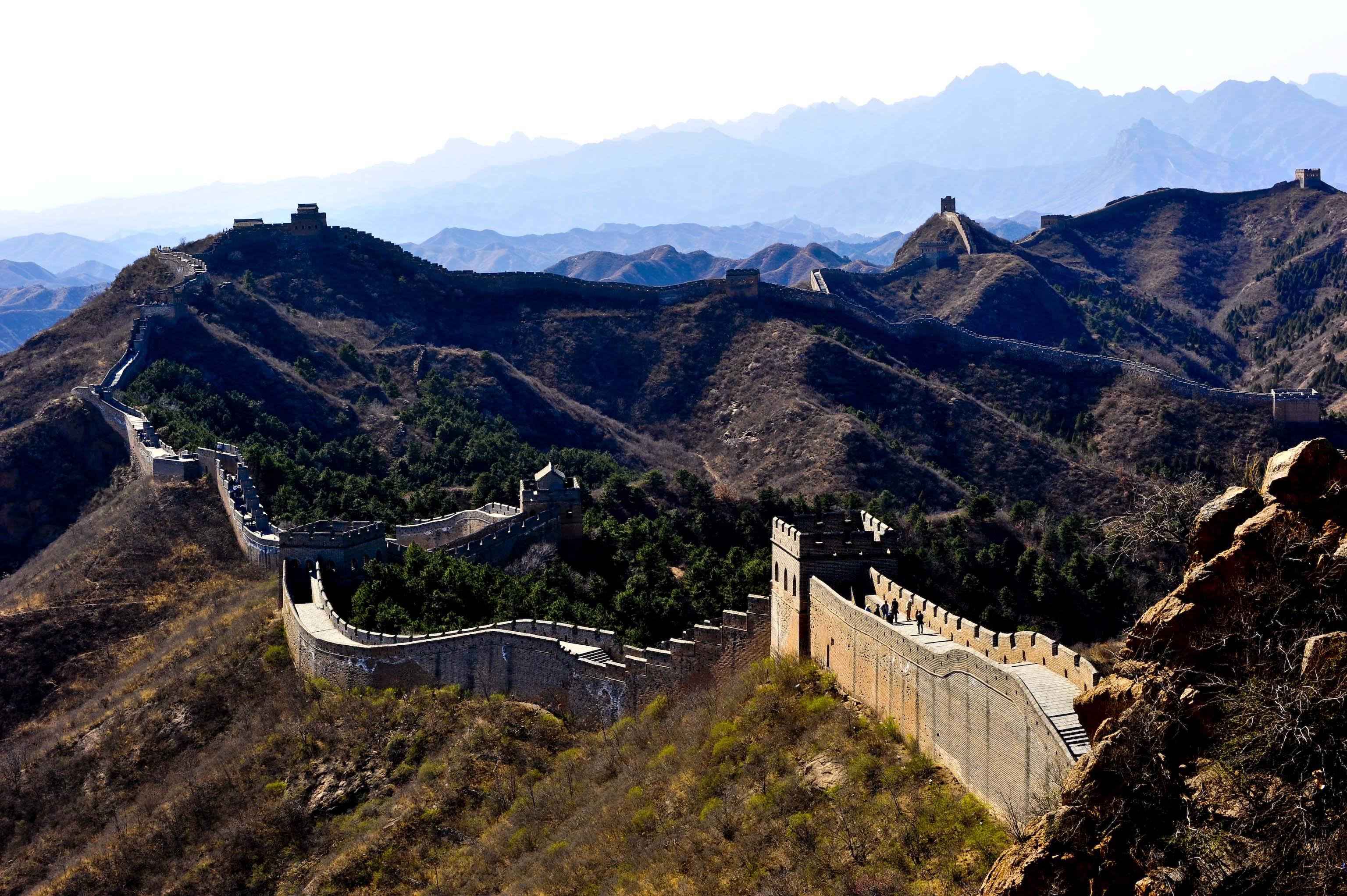



 The Construction of the magnificent palace started in 1406, and ended in 1420. It took 14 years to complete the project. One year after completion, Emperor Yongle moved his capital from Nanjing to Beijing. Since then, 24 emperors have lived at the Forbidden City, 14 during the Ming Dynasty and 10 during the Qing Dynasty.
The Construction of the magnificent palace started in 1406, and ended in 1420. It took 14 years to complete the project. One year after completion, Emperor Yongle moved his capital from Nanjing to Beijing. Since then, 24 emperors have lived at the Forbidden City, 14 during the Ming Dynasty and 10 during the Qing Dynasty.
